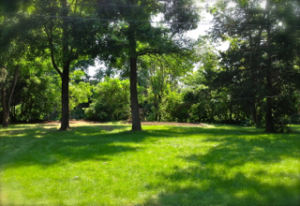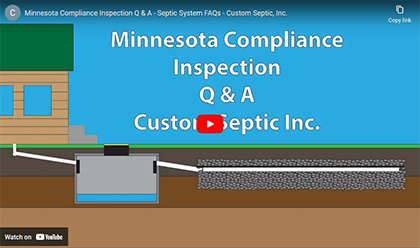Guide to How a Conventional Septic System Works
 This article is Part 2 of a 3 Part Series on Septic System Beginners from the Licensed Septic Professionals at Custom Septic, Inc.(CSI). In part one we talked about how you can determine if your property is connected to a City Sanitary Sewer System of if you have a Private Backyard Septic System. Now we will provide a simple explanation of How a Conventional Anoka, MN, Ramsey or Dayton, MN Septic System Works. It is very important to provide Effective Treatment of Raw Sewage before it is allowed to enter back into the ground water. Part 3 will get into Care and Maintenance for a Healthy Septic System that should last for decades.
This article is Part 2 of a 3 Part Series on Septic System Beginners from the Licensed Septic Professionals at Custom Septic, Inc.(CSI). In part one we talked about how you can determine if your property is connected to a City Sanitary Sewer System of if you have a Private Backyard Septic System. Now we will provide a simple explanation of How a Conventional Anoka, MN, Ramsey or Dayton, MN Septic System Works. It is very important to provide Effective Treatment of Raw Sewage before it is allowed to enter back into the ground water. Part 3 will get into Care and Maintenance for a Healthy Septic System that should last for decades.
Why We Treat Raw Sewage
Proper treatment of Human Waste and Household Wastewater is crucial for protecting public health, the environment and your own family. Raw Sewage is filled with Bacteria, Viruses and Parasites. Exposure to sewage can lead to severe illness or even death. Wastewater from Anoka, MN homes that utilize an Individual Sewage Treatment System (ISTS) usually goes through a soil treatment system that relies on biology to safely remove harmful organisms.
- Protect Human Health
- Protect the Environment
- Minnesota Law
Septic System Components
There are several different Septic System Designs being used by Minnesota property owners. A Licensed Septic Professional can visit your property to do a site evaluation to determine which septic design is best to install. Most kinds of septic systems share 3 basic components:
- Septic Tank
- Discharge Lines
- Soil Treatment area called the Drainfield
Typical Underground Septic System
Household Wastewater including Sewage, leaves the home through septic pipes that carry the sewer to an underground Septic Tank. The heavier solids sink to the bottom of the tank to form the Sludge Layer. Fats and lighter materials float to the top to form the Scum Layer. The liquid middle layer is called Effluent.
Liquid Effluent wastewater flows out of the septic tank through an outlet pipe. When new wastewater enters into the septic tank an equal amount of liquid effluent is allowed to leave the tank. It flows through the discharge lines and out to the Drainfield where it seeps out into the surrounding Soil Treatment Area.
Biological Treatment Process
Naturally Occurring Bacteria in human waste starts the treatment process inside of the septic tank. This type of bacteria does its job without the need for oxygen. The soil in the drainfield is alive with bacteria, insects, worms and plants that remove harmful materials as the waste water travels through. As a result of this Biological Treatment Process the water is cleaned and harmful organisms removed before reaching the ground water.
Licensed Septic Professional
Custom Septic Inc. (CSI) is a Minnesota Licensed Septic Professional. We are certified to provide Anoka, MN area property owners with site analysis to determine the best type of Septic System Design for their home. Our team has over 19 years of experience with Septic System Installations. Please see our website for information on Low Interest Financing options that may be available to you.
Check out Part 1 and Part 3 in our Septic System Beginners Series.
Contact Custom Septic, Inc. (CSI) for a Free Estimate at 763-218-4769
Serving the Twin Cities Metro Area and Northern Minnesota since 1996!

 Now Accepting Major Credit Cards!
Now Accepting Major Credit Cards!
